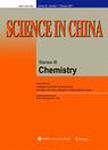SYNTHESES OF POLYMER-BOUND RHODIUM COMPLEXES AND THEIR APPLICATION AS CATALYSTS FOR THE HYDROFORMYLATION OF DIISOBUTYLENE (Ⅰ)
SYNTHESES OF POLYMER-BOUND RHODIUM COMPLEXES AND THEIR APPLICATION AS CATALYSTS FOR THE HYDROFORMYLATION OF DIISOBUTYLENE (Ⅰ)作者机构:Department of Chemistry Nankai University Tianjin Beijing Research Institute of Chemical Industry
出 版 物:《Science in China,Ser.B》 (中国科学B辑(英文版))
年 卷 期:1985年第28卷第9期
页 面:897-905页
核心收录:
主 题:SYNTHESES OF POLYMER-BOUND RHODIUM COMPLEXES AND THEIR APPLICATION AS CATALYSTS FOR THE HYDROFORMYLATION OF DIISOBUTYLENE CI
摘 要:Copolymer of styrene-divinylbenzene in bead form (with DVB 8%, average pore radius 3.0×102, specific surface area 25m2/g, particle size 0.2—0.4mm) was made by the suspension polymerization. After chloromethylation, the beads were then reacted with lithium diphenyl phosphine and various amines separately. Two types of polymeric ligands, i.e. polyvinylbenzyl diphenyl phosphine and eight kinds of polyvinylbenzyl amines were thus obtained. In order to prepare the polymer-bound rhodium complexes, the ligands were then reacted with [Rh(CO)2CI]2. The initial composition and structure of the polymeric complexes were verified by IR spectra. The complexes synthesized above were used to catalyze the hydroformylation of diisobutylene under conditions of 110℃, 100(120) kg/cm2 and H2/CO=1:1. The effects of the donor atoms (N, P) on the activity of the two types of catalysts and the N-substituted groups on the activity ’of polymeric amine-rhodium complexes were examined.



